Ten years on from the financial tumult that led to the government of the day having to guarantee the viability of the State’s banks in an historic and unprecedented move, we look at the events of September, 2008.
Each day this month, we will recall some of the stories that pointed to the dramatic unravelling of the global banking system.
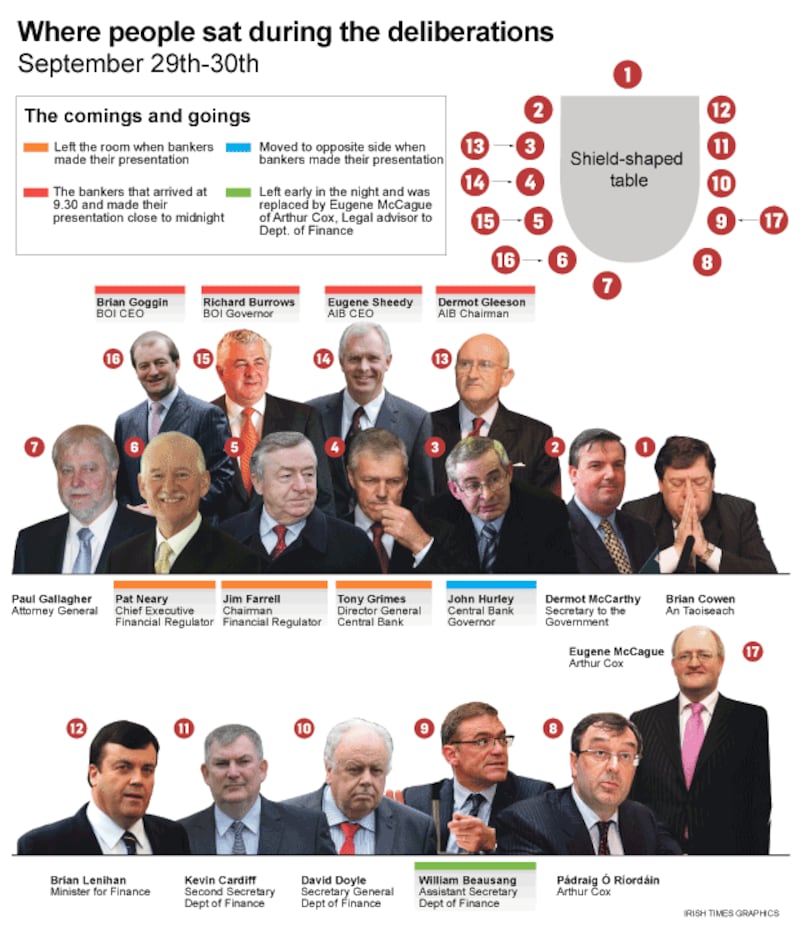
Day 26 - September 30th
Blanket guarantee
The Government announces a two-year blanket banking guarantee, covering €440 billion of deposits and bonds of six lenders: AIB, Bank of Ireland, Anglo Irish Bank, Irish Life & Permanent, EBS and Irish Nationwide Building Society.
Finance minister Brian Lenihan says: “I do not see a hazard or exposure from the decision I have arrived at, for the taxpayer has a vital interest in seeing that the bloodstream of our banking system is maintained.”
Emergency talks
The Belgian, French and Luxembourg governments also announce the results of a round of overnight emergency talks: committing €6.4 billion between them to keep financial group Dexia afloat.

‘Whatever it takes’
UK prime minister Gordon Brown, under pressure following Ireland’s announcement, promises in a to do “whatever it takes” to protect deposits in British banks, announcing a plan to increase a guarantee for bank savings to £50,000 from £35,000.
Day 25 - September 29th
Bradford & Bingley nationalised
Troubled British mortgage lender Bradford & Bingley is nationalised, with its savings business and retail branch network sold on to Spain’s Banco Santander.
Emergency loan
Munich-based Hypo Real Estate is forced to secure a €35 billion emergency credit line from the German government and rival lenders after its Dublin-based unit Depfa Bank, which it had acquired the previous year, runs into funding problems.
Iceland seize Glitner
In Iceland, the government seizes control one of the country’s third-largest bank, Glitner.
Wachovia deal
US banking giant Citigroup agrees to buy troubled lender Wachovia in a $2.2 billion all-stock rescue deal, backed by loan-loss-limit guarantees from the Federal Deposit Insurance Corporation.
Dow plummets
The Dow Jones Industrial Average index plunges by a record 777 points as the House of Representatives votes down US president George W Bush’s $700 billion bailout plan for the financial system.
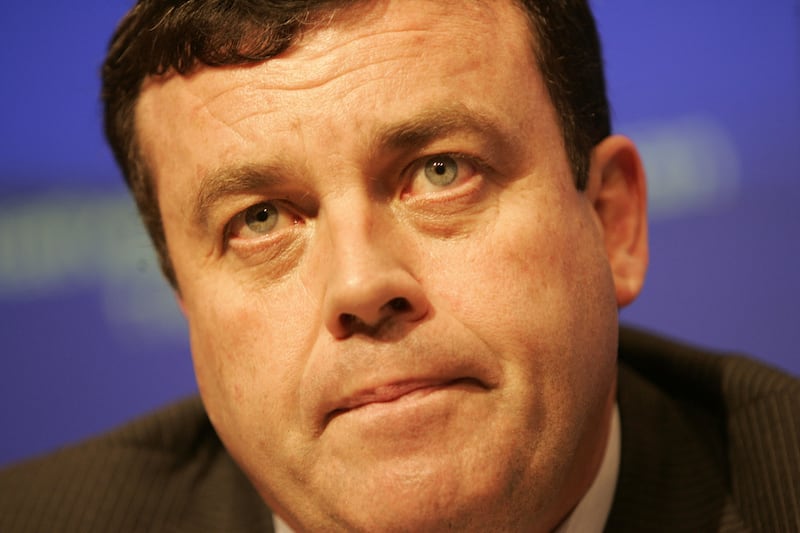
Fateful gathering
Taoiseach Brian Cowen, minister for finance Brian Lenihan, head of financial regulation Patrick Neary, Central Bank governor John Hurley, government officials, legal advisors and the chairmen and chief executives of the country’s two largest banks gathered in Government Building as Anglo Irish Bank teeters on the brink of default.
Day 24 – September 28th
Bank funds tighten
As funding conditions tighten, AIB holds a Sunday board meeting, where it is noted that “the authorities expected that two institutions would fail (unless white knights emerged)”.
Tax shortfall forecast
A pre-budget Cabinet meeting hears that the Department of Finance has forecast a tax shortfall of €6.5 billion for 2008. After the discussion, Minister for finance Brian Lenihan gives an oral presentation of how volatility in international financial market was adversely affecting the liquidity positions of the banks.
Pressure mounts
Senior Central Bank and Department of Finance officials work through the weekend, receiving various reports from advisers, including PwC and Merrill Lynch. Merrill says that it is “important for the Government be prepared to active quickly and decisively as required, to step in and prevent a systemic problem”.
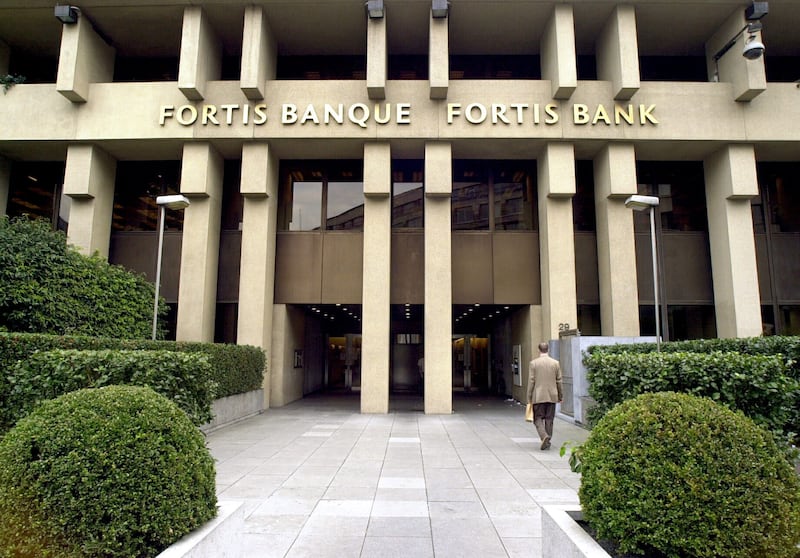
Fortis bailed out
Benelux financial services group Fortis is bailed out by authorities in the Netherlands, Belgium and Luxembourg.
Day 23 - September 27th
‘Save the banks at all costs’
The minister for finance Brian Lenihan – as he would later say in an RTÉ documentary in 2010 – misses a call on Saturday, September 27th, 2008 from then European Central Bank president Jean-Claude Trichet. Mr Lenihan had been at a Fianna Fáil event at a race course in Co Kilkenny.
“So, I caught up with Mr Trichet’s message the following day, which was that ‘you must save the banks at all costs’,” Mr Lenihan would recall.
Mr Trichet, however, would deny before members of the Oireachtas banking inquiry in 2015 that he made any such call.
Mr Trichet told the inquiry he was in contact with the then governor of the Central Bank , John Hurley, around that that time and that his message was consistent across Europe, which, he said, was: “We are in the worst crisis since World War II, make no mistake…it is absolutely drastic…we are doing all we can on the liquidity basis, but you are responsible, your government, for the solvency basis.”
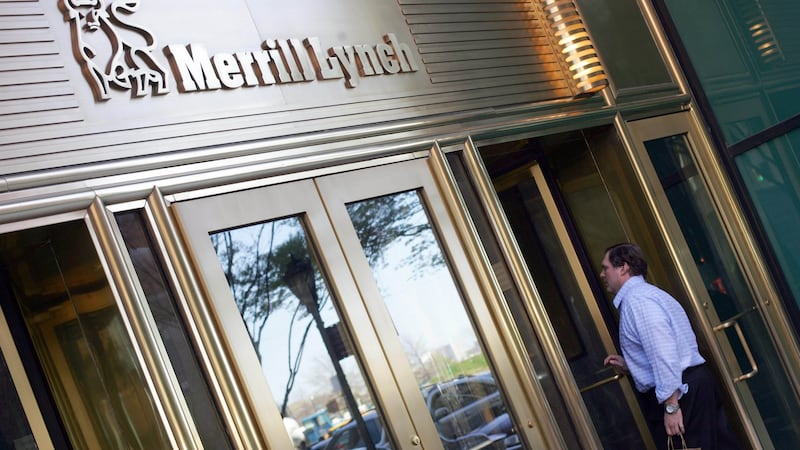
Day 22 – September 26th
Blanket bank guarantee ‘a mistake’
Merrill Lynch, which had been hired earlier in the week to advise the Government on the banking crisis, warns minister for finance Brian Lenihan that a blanket guarantee “would be a mistake” and impact the country’s credit rating and allow weaker banks to survive. Still, it said that such a guarantee would be the “best/most decisive/most impactful from a market perspective” and help stem deposit outflows.
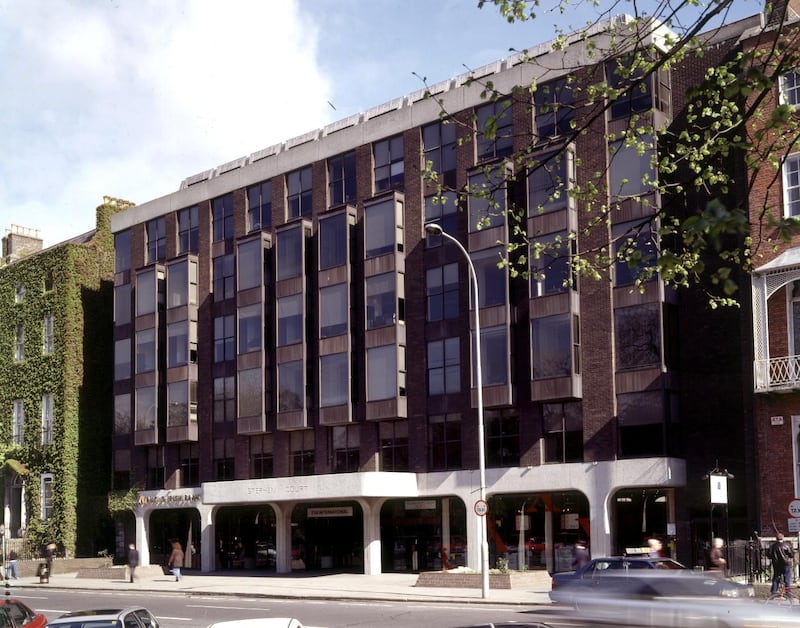
Anglo requests loan
Anglo Irish Bank formally puts in a request for a short-term loan of €1.7 billion from the Central Bank to help it get through to the end of the month. The same day, a unit of Irish Life & Permanent (IL&P) begins to transfer deposits to Anglo Irish Bank, which would build up to more than €7 billion over the next four days to help Anglo report a healthier financial position at its end-September financial year.
Wachovia’s troubles mount
US lender Wachovia loses a quarter of its market value amid mounting speculation that the firm is in serious trouble. The company is reported in various publications online later in the day to be in talks with Citigroup, Wells Fargo and Spain’s Santander
Day 21 – September 25th
Ireland falls into recession
Ireland, the former Celtic Tiger economy, becomes the first country in the euro zone to fall into recession, as the Central Statistics Office reports that gross domestic product (GDP) shrank 0.3 per cent in the first quarter of 2008 and by 0.5 per cent in the second.
Merrill Lynch advice
Investment bankers from Merrill Lynch, who had been hire 24 hours earlier by the Department of Finance in Dublin to advise on the unfolding banking crisis, outline various options to Irish regulatory and department officials. These include a special €20 billion liquidity scheme for the sector, guarantees, nationalisation and the possibility of setting up a bad bank for risky loans.
Washington Mutual seized
US savings bank Washington Mutual (WaMu), with $307 billion in assets, is seized by federal regulators, becoming the largest bank failure in the country’s history. Authorities broker an emergency deal to sell virtually all of the company to JP Morgan for $1.9 billion.

Day 20 – September 24th
‘Our economy is in danger’
US president George W Bush delivers a prime-time television address to the nation on the urgent need for Congress to pass his administration's planned $700 billion bailout of financial firms. "We are in the midst of a serious financial crisis," he says. "Our entire economy is in danger."
Campaign suspended
Republican presidential candidate John McCain surprisingly suspends his election campaign to return to Washington to participate in the Wall Street rescue talks. While the Democrats’ nominee, Barack Obama initially, who’s leading in the polls, says that neither candidate needs to intervene, he later gets involved.
FBI investigation
The FBI starts an investigation into US government-backed mortgage giants Fannie Mae and Freddie Mac, failed investment bank Lehman Brothers and rescued insurer AIG over the role in the subprime mortgage meltdown.
Day 19: September 23rd
Buffet invests in Goldman Sachs
Investment guru Warren Buffet’s Berkshire Hathaway invests $5 billion in Wall Street giant Goldman Sachs by way of preferred stock, carrying a 10 per cent dividend yield. The deal also gives Berkshire the right to acquire ordinary shares within five year.
Opposition grows against US asset plan
Political opposition to the plan by US president George W. Bush’s administration to allow the Treasury Department to buy up $700 billion of risky mortgage-related assets from bank grows in Washington, pushing most financial shares lower. Goldman Sachs is a rare exception, rising 3.5 per cent.
Nomura buys Lehman operations
Japanese brokerage Nomura agrees to buy failed US investment bank Lehman Brothers’ European and Middle Eastern equities and investment banking operations – a day after the Tokyo-based firm secured a deal to snap up Lehman’s Asian operations.

Day 18 – September 22nd
Merger proposal rejected
Anglo Irish Bank chairman Sean FitzPatrick and chief executive David Drumm meet their counterparts at Irish Life & Permanent (IL&P), Gillian Bowler and Denis Casey, to try to persuade them of the merits of a merger between both institutions. IL&P rules out a deal, but agrees to continue to provide Anglo with short-term funding.
Deposits leave banks
The Central Bank informs senior officials at the Department of Finance at the National Treasury Management agency that some of the Irish banks have experienced “significant outflows” of deposits. Anglo had previously requested €7 billion from the Central Bank by way of an asset swap, but the authorities turn this down unless it becomes absolutely necessary.
Wachovia and Morgan Stanley merger
The Wall Street Journal reports that Morgan Stanley’s board is preparing to meet over the coming days to discuss a merger with troubled North Carolina-based financial services group Wachovia, with sovereign wealth fund China Investment Corp. said to be waiting in the wings to invest in a combined company.
Day 17 – September 21st
Goldman Sachs goes commercial
The US’s two largest independent investment banks, Goldman Sachs and Morgan Stanley, apply on Sunday 21st, 2008, to transform themselves into regular commercial banks – giving them access to the full array of the Federal Reserve’s lending facilities.
While the plan would subject the two firms to far greater regulation and spell the end to the independent Wall Street investment banking model, it would be a signal to investors globally that neither would be allowed to fail.
INBS funds warning
Investment bankers at Goldman Sachs that had been advising Irish Nationwide Building Society since it put itself up for sale in 2007 warn Department of Finance officials that the lender is in danger of running out of funds within weeks.

Picking over Lehman
International banks pick over the carcass of Lehman Brothers, with Japan’s Nomura Holdings and Britain’s Barclays, which had pulled out of a potential takeover of Lehman the previous weekend, now looking at buying parts of the business.
Day 16 - September 20th, 2008
Scenario planning
The Irish Financial Regulator steps up its scenario planning as it calls in senior executives among banks and building societies in sequence to work out how much they are losing in deposits, as well as seek their views on potential merges and tie-ups within the sector.
Deposit guarantee
The minister for finance Brian Lenihan lifts the threshold of the government guarantee on bank deposits from €20,000 to €100,000, saying: “I want it to be known that the government is confident about the strength and resilience of the Irish financial system”. It lifts the level of protection to the highest of any country in Europe.
Bush bailout
US president George W Bush’s administration formally proposes a massive bailout plan for US financial institutions, which would allow the Treasury Department to buy up to $700 billion (€600 billion) of toxic mortgage-related assets from private firms. The blueprint would lift the national debt ceiling to $11.3 trillion. “The risk of doing nothing far outweighs the risk of the package,” Mr Bush says at a news conference.
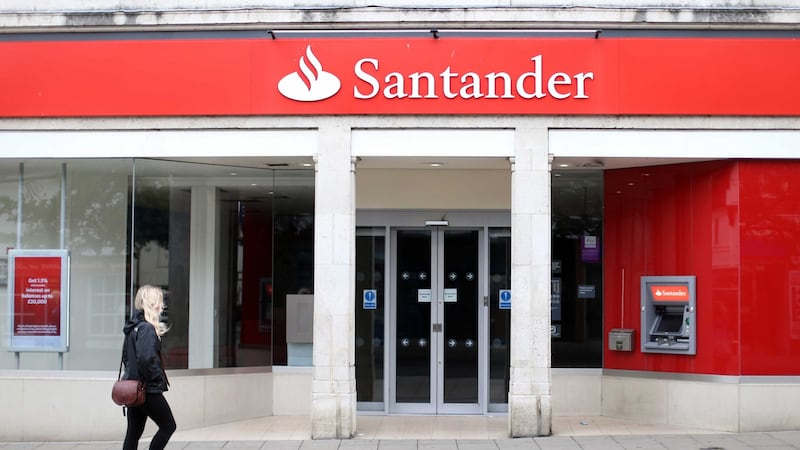
Day 15 - September 19th, 2008
Regulator takes on hedge funds
The Irish Financial Regulator takes aim at hedge funds betting on declining bank stocks by introducing a ban on the “short selling” of Bank of Ireland, AIB, Irish Life & Permanent, and Anglo Irish Bank “to ensure the orderly conduct of the market”. It comes a day after the UK announced a similar prohibition.
Rumours abound
Jittery financial markets succumb to rumour and speculation. Bank of Ireland is forced to dispel reports that Spanish bank Banco Santander is looking to take it over. In New York, markets move on chatter that the Federal Reserve is planning to buy up banks’ toxic assets.
Anglo Irish pitches for INBS
It emerges that Anglo Irish Bank has pitched to regulators that it take over Irish Nationwide Building Society in an effort to shore up market confidence in its own financial situation and convince the Central Bank – and rival banks – to provide it with a funding line.
Day 14 - September 18th, 2008
Lenihan complains to RTÉ
Minister for Finance Brian Lenihan rings RTÉ director general to complain about a segment on Radio 1’s Liveline programme that day featuring depositors worried about their savings in Irish lenders – fearing that it could trigger a bank run.
B of I shares plunge 14%
Bank of Ireland’s shares plunge 14 per cent, the most in two decades, after announcing that it plans to cut its full-year dividend by 50 per cent as chief executive Brian Goggin seeks to build up capital to strengthen the group’s balance sheet as bad debts are expected to jump. The company admits that retail banking in Ireland over the previous six months had been “particularly challenging”.
UK ban on ‘short-selling’
The UK Financial Services Authority announces a ban on investors placing new bets on financial shares falling – or what is known as “short-selling” – after HBOS, the country’s then biggest mortgage lender, lost almost 40 per cent of its market value over three days.
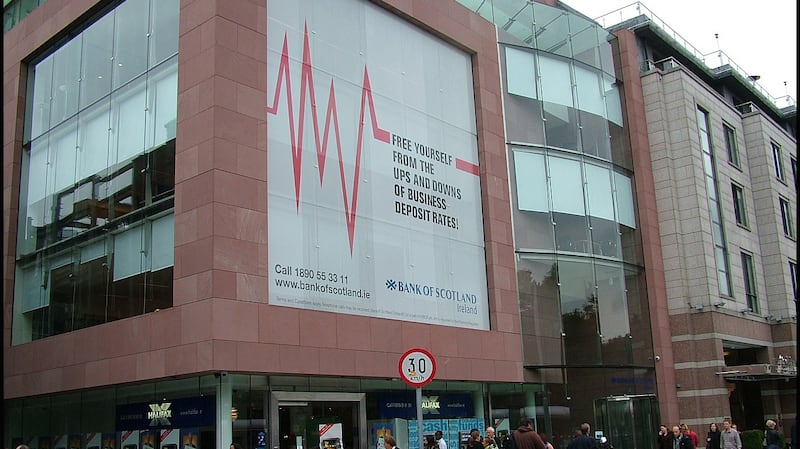
Day 13 - September 17th
HBOS rescue
HBOS, owner of Bank of Scotland (Ireland), is rescued by Lloyds TSB in a deal orchestrated by the UK government as global financial markets go into freefall in the wake of the Lehman Brothers collapse. Bank of Scotland (Ireland) had built up a €32 billion loan book at that stage, and Lloyds would decide two years later to hand back its Irish banking license and begin to wind down the book.
AIG bailout
The Federal Reserve Bank of New York moves unveils an $85 billion bailout of AIG, giving taxpayers an almost 80 per cent equity stake in the group as US authorities conclude the insurer is too big to fail.
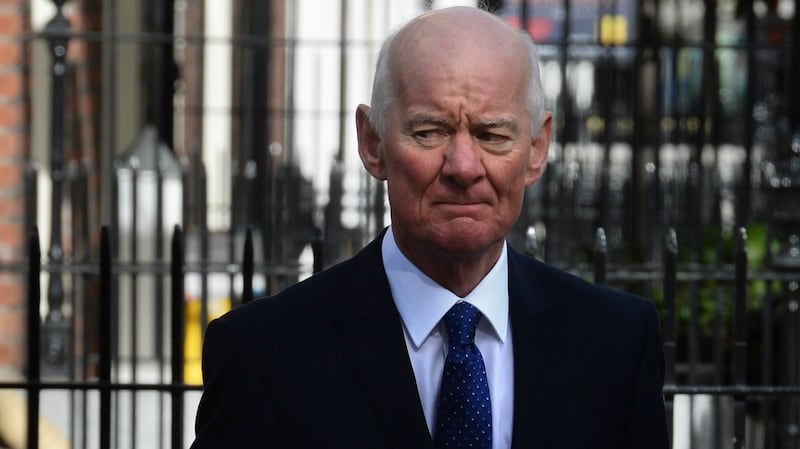
Neary backs Irish banks
Patrick Neary, chief executive of the Irish Financial Regulator, says that the State’s banks are well placed to weather the storm, as they had little exposure to toxic US subprime mortgage investments and had “good shock-absorption” capital levels. However, it would later emerge that Anglo Irish Bank breached its regulatory liquidity ratios that day as deposits were pulled out of the lender, prompting it to ask the regulator for a special liquidity line in case more money with withdrawn.
Days 11 and 12 - September 15th–16th
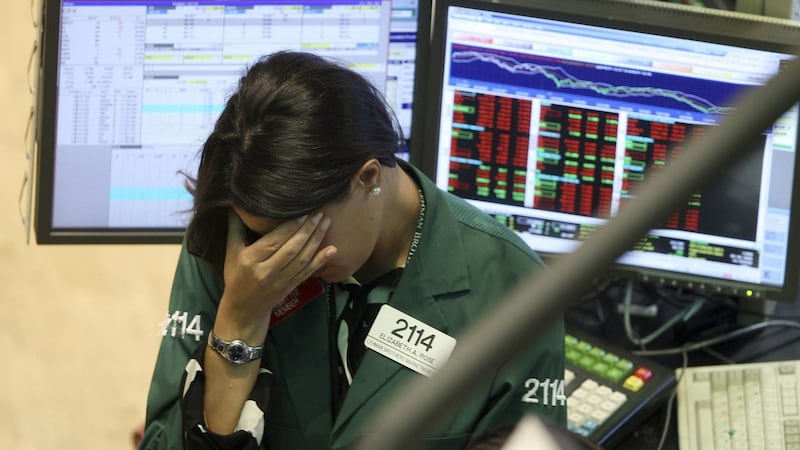
Biggest bankruptcy in history
Lehman Brothers officially files the biggest bankruptcy in history early on Monday, September 15, 2018, with the US Bankruptcy Court in the Southern District of New York, becoming the second major Wall Street firm, after Bear Stearns, to implode in the space of six months under the weight of the deepening credit crunch.
The $639 billion bankruptcy would rock the foundations of global financial markets and act as a catalyst for the so-called Great Recession.
Anglo shares slump 19%
In Dublin, Anglo Irish Bank shares slump 19 per cent to lead a sell-off across Irish financial stocks as the fallout from Lehman Brothers’ collapse became to unfold globally. Irish Life & Permanent shares drop more than 13 per cent, while AIB and Bank of Ireland decline by 6 per cent and 5.7 per cent, respectively.
Central Banks globally pump hundreds of billions of euro into markets in a coordinated effort to ease the worst crisis facing the financial system since the 1920s.
AIG borrows $20bn
New York regulators agree to allow ailing US insurance group AIG to borrow $20 billion from one of its own subsidiaries to shore up its balance sheet after its market value plunged by more than two-thirds in early trading on Wall Street.
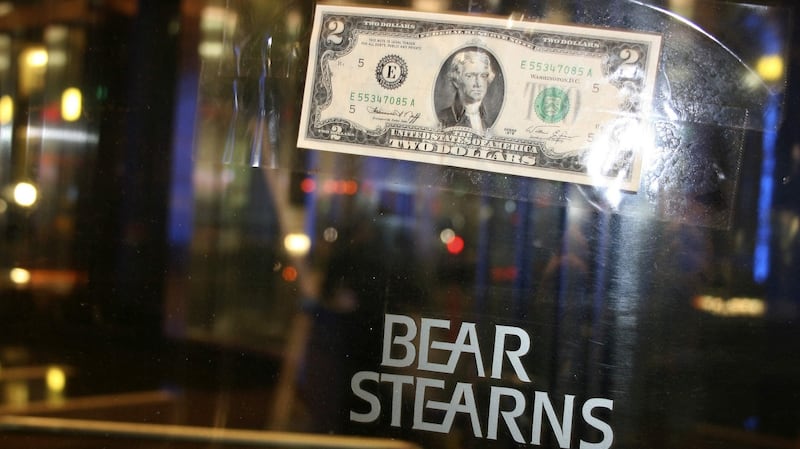
Day 10 - September 14th, 2008
Shoring up Lehman
British lender Barclays ends its talks to buy fast-failing US investment bank Lehman Brothers. It would emerge later that the UK Financial Services Authority and treasury department effectively put a stop to the risky deal going through.
After a fall-back option of other Wall Street firms shoring up Lehman also fails because of lack of support from the US Federal Reserve, Lehman is directed by government officials to file for bankruptcy. Scores of bank employees arrive at the bank’s headquarters on 7th Avenue in midtown Manhattan and begin to clear their desks.
Domino effect
Larger rival, Merrill Lynch, facing the prospect of being the next domino to fall, agrees to sell itself to Bank of America for about $50 billion. Bank of America, which had purchased ailing US mortgage provider Countrywide Financial earlier that year, appears to be the key beneficiary of Wall Street’s survival-of-the-fittest nature.
Once in a century
Major central banks worldwide and investors globally are put on notice for an expected panicked reaction when financial markets reopen the following day, on Monday, September 15th. Former Federal Reserve chairman Alan Greenspan, who had retired in January 2006 after almost two decades in charge of the world’s most influential central bank, says that the financial crisis “is probably a once in a century event” and that more firms will go bust.
Day Nine - September 13th, 2008
Bank of America pulls out
A year to the day after UK lender Northern Rock asked for and received emergency aid from the Bank of England, US treasury secretary Hank Paulson makes it clear to officials working on last-ditch solutions for the fast-fading Lehman Brothers that Washington was not willing to support a government-led bailout.
Bank of America, which was seen as a potential rescue investor for Lehman, pulls out of talks on Saturday, September 13th, 2008 to buy the 158-year-old investment bank.
AIB steps up assets sale plan
US insurance group AIG reportedly steps up plans to sell assets or raise capital and announce plans ahead of a self-imposed September 25th deadline.
The main concern was the once-ultra-safe insurer’s massive sideline business that sold a type of credit insurance – called credit default swaps (CDS) – against bundles of complicated debt assets backed by US subprime mortgages going into default.
It was becoming increasingly obvious to investors hat AIG faced insolvency as it was on the hook to pay out on the CDSs as subprime borrowers were defaulting in their thousands. However, AIG was so large that its demise would hit the entire global economy.
Day Eight - September 12th, 2008
Insurance costs
The cost of insuring Irish bank bonds against default in financial markets spikes to their highest levels since US investment bank Bear Stearns’ near-collapse six months earlier as investors focus on the increasing reliance of Dublin-based banks on funding from the European Central Bank, the lender of last resort.
Panic stations
With Lehman Brothers on the brink of collapse as it headed into the weekend on Friday, September 12th, 2008, teams of top Wall Street bankers and government officials flooded the New York Federal Reserve building for the weekend to search for options for the group as panic takes hold. British bank Barclays and Bank of America top the list of potential buyers for the ailing business.
AIG shares
It emerges that US insurance giant AIG has hired JP Morgan to advise on ways to raise new capital, after credit ratings firm Standard & Poor’s threatened to downgrade its grading of the company’s creditworthiness. AIG shares fall by more than 30 per cent in New York.
Day Seven - September 11th, 2008
Stocks plummet
As New York commemorates the seventh anniversary of 9/11 terrorist attacks, Lehman Brothers’ worsening financial state and concerns over US savings bank Washington Mutual (WaMu) send banking stocks plummeting. WaMu loses more than a third of its market value, while investment bank Merrill Lynch drops 16 per cent.
Lehman Brothers chairman and chief executive Dick Fuld’s efforts to shore up support for the bank – saying the bank’s recent losses “have clouded the underlying value of our franchise” – fall on deaf ears in the market.
Recession warning
The European Commission warns that the UK, Germany and Spain could go into recession within a year as it lowers its economic forecasts for the wider European Union amid the global financial downturn and high energy and food prices.
Irish sell-off
Irish banking stocks suffer another sell-off as analysts at German investment bank Dresdner Kleinworth downgrade their ratings on AIB and Bank of Ireland to outright ‘sell’, warning that both may have capital shortfalls in 2009 as they set aside provisions for bad boomtime loans to property developers.
Day Six - September 10th, 2008
Lehman considers sale
Lehman Brothers is bounced by financial markets into rushing out its quarterly results, showing it made an almost $4 billion loss over three months as it wrote off more than $5 billion of toxic US residential mortgage investments.
The bank also reveals plans to sell its majority stake in its investment management unit, Neuberger Berman, and spin off some $25 billion of commercial property assets into a publicly-traded real-estate investment trust (Reit). Group chairman and chief executive of 15 years, Dick Fuld, abandons Lehman Brothers’ prized independence and leaves the door open for a potential sale of the entire firm.
Irish Banking shares plunge
Irish banking shares fall by as much as 8 per cent as investors fret about Lehman Brothers’ future and after Fitch Ratings stripped Irish Nationwide Building Society of an A-rating, pushing it down a level to “BBB+”, or three rungs above “junk” status. Fitch says commercial property lending on Ireland and the UK had “deteriorated further and faster than was previously anticipated in early 2008”.
‘We’ve reached the end’
Deutsche Bank’s chief executive, Josef Ackermann, tells a banking conference in Germany that he thinks “we’ve reached the end” of the credit crunch, that “global credit conditions are very positive”, and the real economy – sectors that produce goods and services – continues to do well.
Days Four & Five- September 8th & 9th, 2008
Anglo loan
Anglo Irish Bank’s then finance director, Willie McAteer, receives a €8.4 million loan from the bank to refinance borrowings from Bank of Ireland, which had been backed by shares in Anglo.
The loan averted a potential sale of the stock by Bank of Ireland, which would have damaged market confidence on Anglo. McAteer would ultimately plead guilty in late 2016 to receiving the Anglo Irish loan under fraudulent circumstances.
Lehman plunge
Lehman Brothers’ shares plunge 45 per cent to their lowest level in more than a decade amid concerns that the Wall Street bank will not be able to raise needed capital, as hopes of a rescue investment from Seoul-based Korea Development Bank fade. Leading credit ratings agencies Standard & Poor’s and Fitch putting their gradings on the group on review for a potential downgrade.
EBS slump
EBS Building Society reports an almost 40 per cent slump in pre-tax profits in the first half of 2008, to €27 million, as its funding costs soar during the worsening global financial crisis. The fifth-largest Irish lender also reveals that it has become reliant on European Central Bank for some €2.2 billion of funding, indicating the growing level of stress in the Irish financial system.
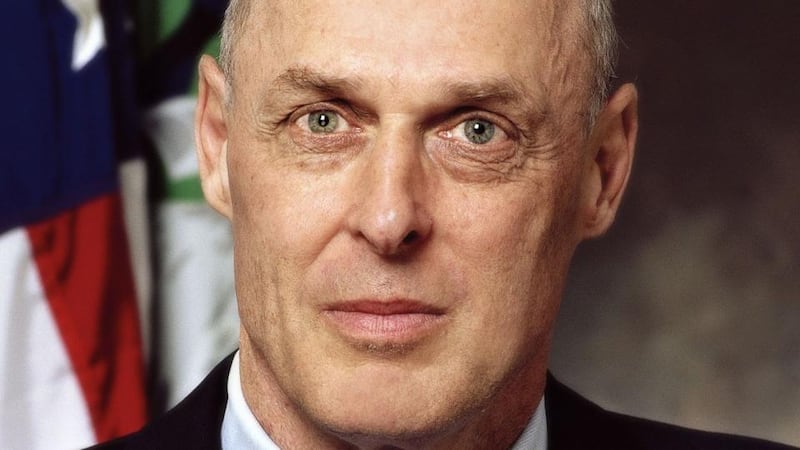
Day Three - September 7th, 2008
US bailout
The then US treasury secretary, Hank Paulson, unveils a massive bailout of Fannie Mae and Freddie Mac, the government-backed mortgage giants, marking one the most sweeping Washington government interventions in private financial markets for decades.
The US government agreed to pump as much as $200 billion of capital into the two firms in order to keep the country’s housing market functioning, giving Pauslon’s department a new class of “senior preferred” shares in each, as well as the option of buying almost 80 per cent of their ordinary shares.
INBS ‘rock solid’
Irish Nationwide Building Society tells the Sunday Independent that the lender is “rock solid” and continues to be a “strong, profitable financial institution with record levels of capital and liquidity”, as the lender continued to grapple with the fallout from an unfounded Reuters report that it was in financial trouble.
Day Two - September 6 th, 2008
Rescue plan
On Saturday, September 6th, 2008, the US government scrambled to put together the final parts of a rescue plan for Fannie Mae and Freddie Mac, government-backed firms that help keep the US mortgage market running by buying loans from banks and holding them in their portfolios or repackaging them as mortgage-backed securities.
Lehman talks
State-owned Korea Development Bank (KDB) continued talks with Lehman Brothers over the possibility of a joint investment in the struggling Wall Street bank with some other South Korean banks. Initial news of KDB’s interest in the fourth-largest US investment bank had first emerged in late August, 2008.
Bank closure
Nevada regulators close down Silver State Bank, making it the 11th failure of a US Federally insured bank in a little over eight months as the world’s largest mortgage market continued to implode. The Federal Deposits Insurance Corporation moved the bank’s deposits to another lender in the state and warned that more small regional banks were in danger of collapse.
Day One - September 5th, 2008
INBS insolvency
The mounting global financial crisis in early September hit home at 6.15pm on Friday, September 5th, 2008, when news agency Reuters published a report that Irish Nationwide Building Society was in “talks with its lenders to avoid insolvency”.
The report would prove to be unfounded but its then-chairman, Michael Walsh, would later say that it caused a run on the society, resulting in depositors pulling €1 billion of their money from the society by the end of the month
Lehman investment
It emerged that Japanese investment bank Nomura Holdings was considering an investment in Wall Street peer Lehman Brothers, which had been under pressure since smaller rival Bear Stearns almost collapsed the previous March.
Stocks rally
US financial stocks rallied into the weekend amid hopes that then US president George W Bush’s administration would act decisively to extinguish the mushrooming credit crisis.
They were helped by a report that the treasury department was considering ways to inject money into ailing government-sponsored mortgage firms that help lubricate the country’s mortgage market, Fannie Mae and Freddie Mac.
















